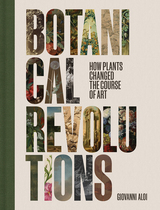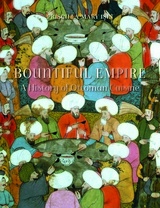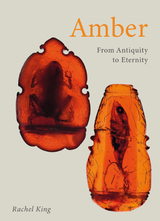
Amber: From Antiquity to Eternity is a history of human engagement with amber across three millennia. The book vividly describes our conceptions, stories, and political and scholarly disputes about amber, as well as issues of national and personal identity, religion, art, literature, music, and science. Rachel King rewrites amber’s history for the twenty-first century, tackling thorny ethical and moral questions regarding humanity’s relationship with amber in the past, as well our connection with it today. With the Earth facing unprecedented challenges, amber—the natural time capsule, and preserver of key information about the planet’s evolutional history—promises to offer invaluable insights into what comes next.
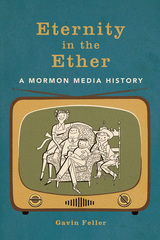
Intriguing and original, Eternity in the Ether blends communications history with a religious perspective to examine the crossroads where mass media met Mormonism in the twentieth century.
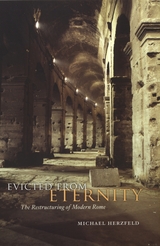
Modern Rome is a city rife with contradictions. Once the seat of ancient glory, it is now often the object of national contempt. It plays a significant part on the world stage, but the concerns of its residents are often deeply parochial. And while they live in the seat of a world religion, Romans can be vehemently anticlerical. These tensions between the past and the present, the global and the local, make Rome fertile ground to study urban social life, the construction of the past, the role of religion in daily life, and how a capital city relates to the rest of the nation.
Michael Herzfeld focuses on Rome’s historic Monti district and the wrenching dislocation caused by rapid economical, political, and social change. Evicted from Eternity tells the story of the gentrification of Monti—once the architecturally stunning home of a community of artisans and shopkeepers now displaced by an invasion of rapacious real estate speculators, corrupt officials, dithering politicians, deceptive clerics, and shady thugs. As Herzfeld picks apart the messy story of Monti’s transformation, he ranges widely over many aspects of life there and in the rest of the city, richly depicting the uniquely local landscape of globalization in Rome.

Formative Years
From the opening pages, we are drawn into Haglund's world, beginning with his earliest musical memories. The composer recalls the profound impact of his aunt Margreth's voice: “The heart of my music started with that voice.” This early connection between sound and emotion sets the stage for Haglund's lifelong exploration of music's power to evoke and express the deepest human experiences.
The book doesn't shy away from the challenges Haglund faced in his youth. We learn of his difficult relationship with his father and a prolonged hospital stay at a young age. These experiences, while painful, proved formative for the young musician. Haglund's description of listening to radio static in the hospital, imagining himself traveling through space, offers a poignant glimpse into the imaginative world that would later inform his compositions.
Creative Evolution
This book does not simply recount Haglund’s life; it explores the very essence of the creative process itself. Readers will find themselves captivated by Haglund's musical journey, from his first encounters with classical music to his development as a composer. The book details pivotal moments, such as hearing Mozart's Piano Concerto no. 21 for the first time, a visit to a medium, and his studies with the unconventional but inspiring teacher Claes-Göran Bjerding. These anecdotes not only chart Haglund's growth as a musician but also reveal the depth of his passion for music from an early age.
Haglund translates emotions, physical sensations, and spiritual experiences into sound. His approach to composition challenges conventional notions of music-making and invites readers to consider the physical and spiritual dimensions of musical experience.
Music and Spirituality
One of the book's most compelling aspects is its exploration of the connection between Haglund's music and his spiritual life. The composer's encounter with the writings of Emanuel Swedenborg marks a turning point, profoundly influencing his approach to composition.
Throughout the book, Yardumian maintains a delicate balance between chronicling Haglund's artistic development and exploring the deeper philosophical and spiritual questions that drive his work. The result is a narrative that is at once deeply personal and universally resonant, touching on themes of creativity, spirituality, and the human condition.
Music and Culture
Yardumian skillfully weaves commentary into the narrative, showing how the larger cultural context informs Haglund's creative process and his role in the larger artistic fabric. For readers interested in the contemporary classical music scene, Listening to Eternity places Haglund within the broader landscape of modern classical music, highlighting his distinctive voice and approach.
Music and Healing
Importantly, Listening to Eternity is a story of resilience and transformation. Haglund journeys through periods of illness, anxiety, and artistic struggle to eventual recognition and acclaim. He reveals how his compositions became both a sanctuary and an expression of his quest for healing and connection with the cosmos. Haglund’s unwavering commitment to his artistic vision, even in the face of adversity, serves as a powerful testament to the transformative potential of spiritually-influenced art.
The Somatic Experience of Music
Haglund and Yardumian reflect on the somatic power of music, how compositions generate visceral, bodily experiences that transcend mere sound. For Haglund, music is a medium of conveyance—one that channels spiritual insights and emotions from composer to listener. His works act as a bridge between the material and the divine, offering listeners a chance to journey inward while being transported by the music’s emotional and spiritual depth.
Accessible, Personal Story
This book will appeal to a wide range of readers, from classical music aficionados and composers seeking inspiration, to spiritual seekers interested in the intersection of art and spirituality. It also offers valuable insights for those studying the creative process or exploring the relationship between personal experience and artistic expression.
Listening to Eternity stands as a unique contribution to the literature on contemporary classical music and a compelling exploration of one artist's quest to translate the ineffable into sound.
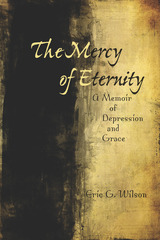
As a bright student-athlete on his way to West Point, Eric Wilson seemed to be well on the way to a fulfilling life. Yet he was haunted by overwhelming feelings of his deep insignificance. As he grew older, the traditional means of fulfillment—marriage and professional success—did nothing to assuage the descents into darkness and destructive behavior. Therapy and medication have offered some relief, but the birth of his daughter ultimately forces his hand. In some ways, the answer has been in front of him the whole time, for English professor Wilson finds in the literature of Coleridge, Blake, and others the lessons that depression might teach. When he comes upon “negative theology”—the school of thought that finds God in the “dark night of the soul”—Wilson discovers the framework for a radical call to forgive depression.
Only by forgiving this capricious, impersonal force is Wilson able to find the grace to move beyond the cycles of destructive self-absorption.Wilson admits that he continues to struggle, but in facing his depression instead of trying to escape it, he finds wisdom and grace.
Beautifully and accessibly written, The Mercy of Eternity is a brief yet profound meditation on the largest question of life.
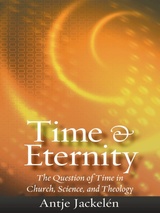
What is time? Is there a link between objective knowledge about time and subjective experience of time? And what is eternity? Does religion have the answer? Does science?
•Theological approaches to time and eternity, as well as a look at Trinitarian theology and its relation to time
•The discussion of scientific theories of time, including Newtonian, relativistic, quantum, and chaos theories
•The formulation of a "theology of time," a theological-mathematical model incorporating relational thinking oriented toward the future, the doctrine of trinity, and the notion of eschatology
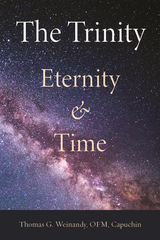
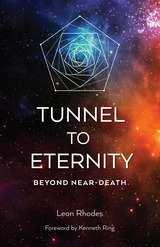
From the experience of dying to awakening to tunnels, bright lights, unfamiliar realms, life reviews, and different levels of consciousness, Leon Rhodes takes the reader on a great adventure into the unknown. An officer in the International Association for Near-Death Studies (IANDS), Rhodes recounts the stories of near-death experiences (NDEs) that people have shared with him over the years. Chronicled as a source of inspiration are the profound changes that occurred in their lives after the discoveries they made.
In addition, the fascinating parallels between NDEs and the spiritual world described more than two hundred years ago by Emanuel Swedenborg provide many insights into the transition from this life to the next world. Rhodes’s unique Swedenborgian perspective broadens the discussion over the significance of the near-death phenomenon.
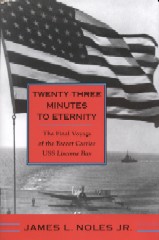
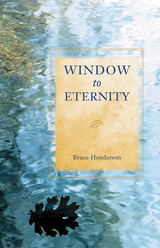
What happens to us when we die? Is there really a heaven and hell? Are there angels watching over us? These questions follow us from early childhood to old age, particularly in moments when we’re confronted with the loss of a loved one.
In Window to Eternity, Bruce Henderson draws from the teachings of visionary Emanuel Swedenborg to paint a vivid picture of heaven and hell, where the souls of the departed become angels and demons and indescribable wonders await. But far from being a distant destination, Henderson shows that heaven is a choice that each of us makes every day—ours to have or to turn away from, regardless of our background or religious upbringing.

The Wine of Eternity was first published in 1957. Minnesota Archive Editions uses digital technology to make long-unavailable books once again accessible, and are published unaltered from the original University of Minnesota Press editions.
Ever since the small Baltic nation of Latvia became a part of the Soviet Union in 1940, its identity has been blurred to Western eyes. Many of its people have left their country in voluntary or forced exile. But, wherever they are today, the Latvians still cherish and preserve a rich national heritage of folklore and culture. Much of this is revealed in these stories, the work of an established Latvian writer who became a wartime refugee from his country.
This volume makes the work of Knuts Lesins available in English for the first time, although his writing has been published extensively in Europe in the original Latvian. In addition to the stories, the author provides a background sketch of the history and culture of Latvia. While much of the fascinating folklore of the country is interwoven in the stories, they are not primarily folk tales. They are perhaps best described as penetrating glimpses into human lives at moments of crisis or decision which reveal an individual's character and philosophy.
READERS
Browse our collection.
PUBLISHERS
See BiblioVault's publisher services.
STUDENT SERVICES
Files for college accessibility offices.
UChicago Accessibility Resources
home | accessibility | search | about | contact us
BiblioVault ® 2001 - 2025
The University of Chicago Press




